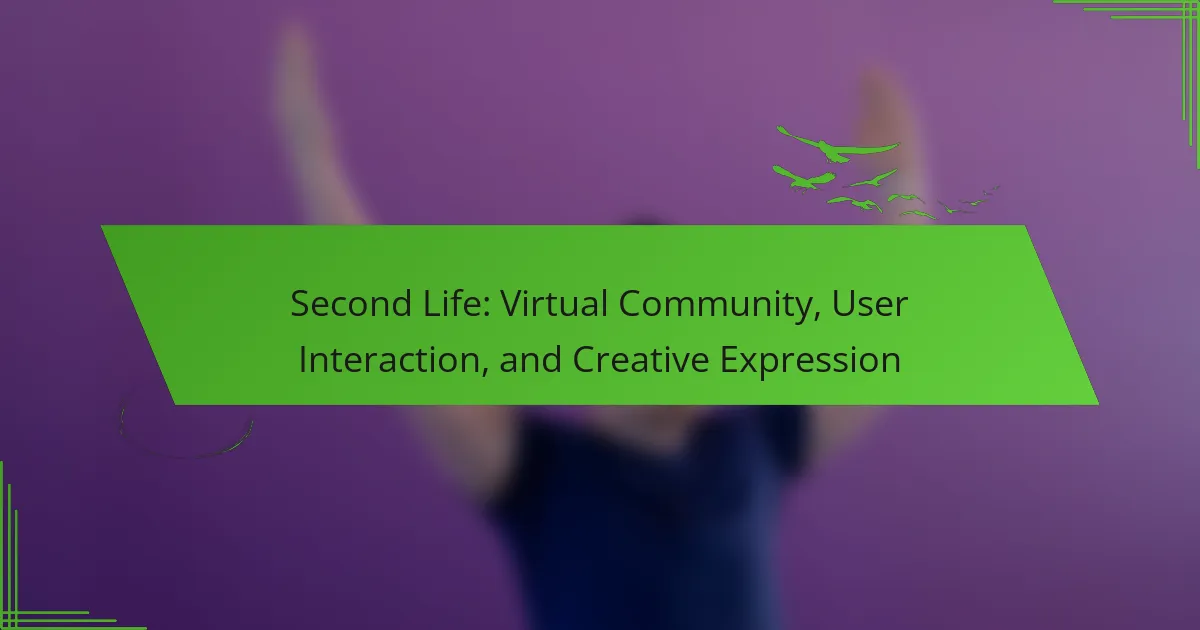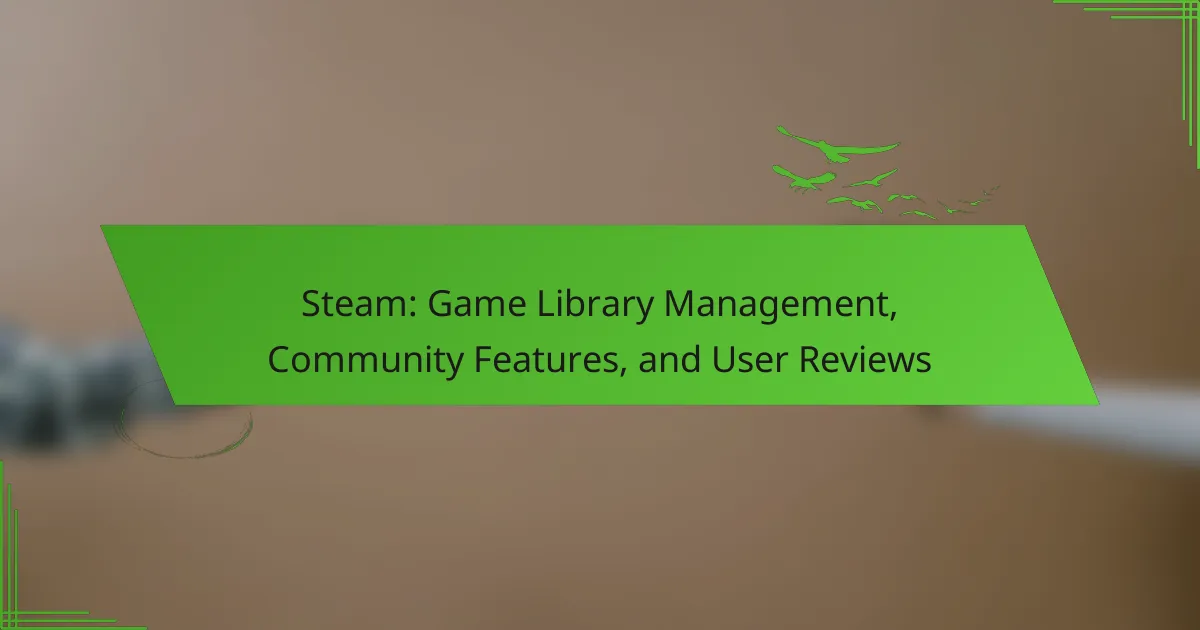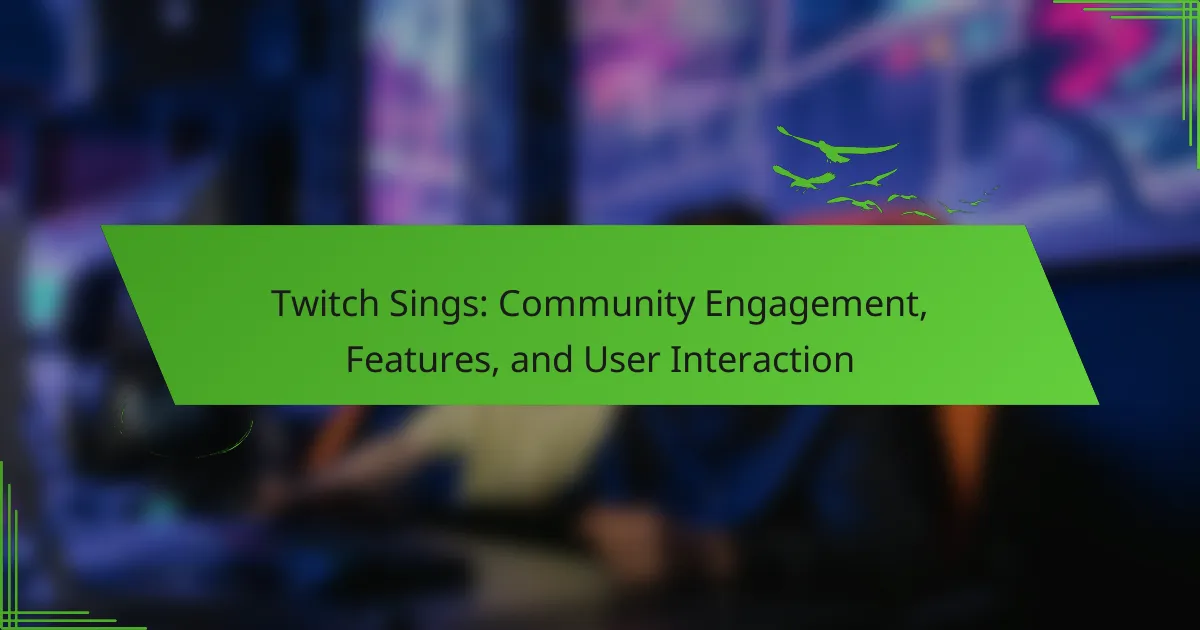Second Life offers a unique virtual community where users engage through avatars, social networking, and creative expression. Users can create content, build environments, and participate in a vibrant virtual economy. The platform presents challenges such as interface complexities and social dynamics. Cultural contexts also shape user interactions, influencing community experiences and creative outputs.

How do users interact within the Second Life virtual community?
Users interact within the Second Life virtual community through avatars, social networking, and creative expression. Avatars serve as digital representations, allowing users to explore, communicate, and engage in various activities. Social networking features facilitate connections through friendships, groups, and events, enhancing community bonding. Creative expression is central, with users creating content, customizing spaces, and participating in virtual economies. This interaction fosters a unique blend of social and artistic experiences, making Second Life a dynamic virtual environment.
What are the primary forms of user interaction in Second Life?
User interactions in Second Life primarily include avatar customization, social networking, content creation, and virtual commerce. Users engage by designing unique avatars to represent themselves, connecting with others through chat and events, creating and selling virtual goods, and participating in immersive experiences. These interactions foster a vibrant community and encourage creative expression.
How does user-generated content influence community dynamics?
User-generated content significantly shapes community dynamics by fostering engagement and creativity. In Second Life, users create immersive experiences that enhance social interaction. This content cultivates a sense of belonging, encouraging collaboration among members. As a result, virtual communities thrive on shared creativity and diverse expressions, reinforcing relationships and community cohesion.
What role do social events play in user engagement?
Social events significantly enhance user engagement in Second Life by fostering community interaction and creative expression. These gatherings facilitate networking, collaboration, and shared experiences among users. Engaging in social events leads to increased participation and retention within the virtual community. For example, themed parties and collaborative projects encourage users to connect, share ideas, and showcase their creativity. This dynamic interaction is a unique attribute of Second Life, differentiating it from other platforms.
Which communication tools are most popular among users?
The most popular communication tools among users in Second Life include instant messaging, voice chat, and group chat features. These tools enhance user interaction and foster community engagement. Instant messaging allows for private conversations, while voice chat provides real-time communication, making interactions more personal. Group chat facilitates discussions among multiple users, enriching the collaborative experience within the virtual community.
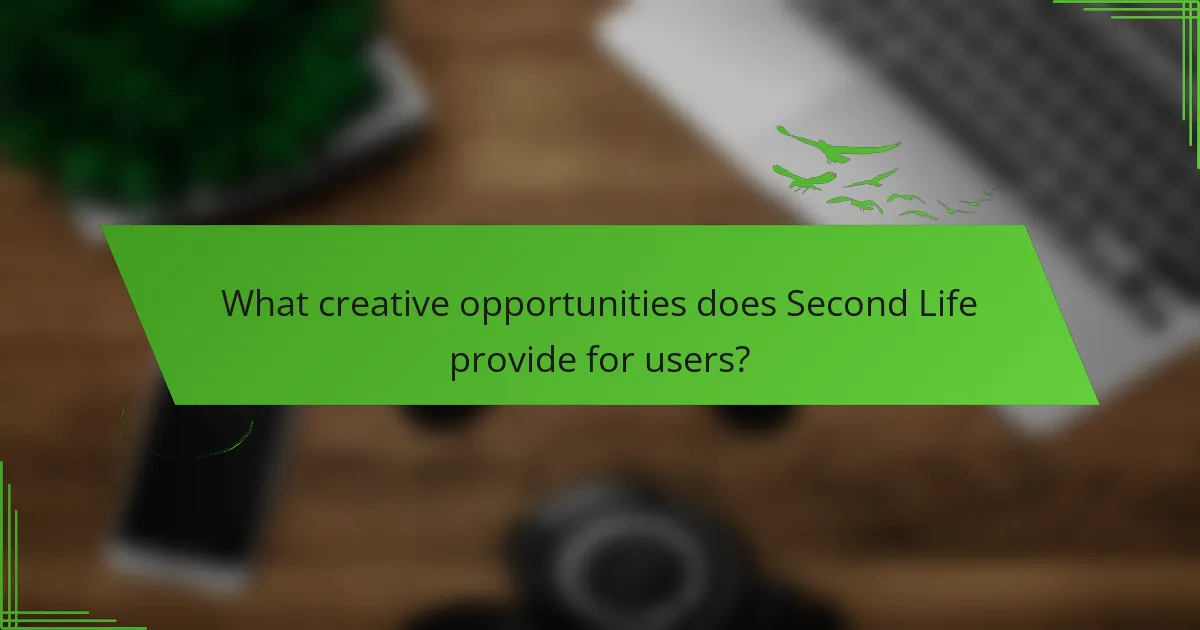
What creative opportunities does Second Life provide for users?
Second Life offers diverse creative opportunities for users, including virtual real estate development, custom content creation, and immersive storytelling. Users can design unique avatars, build intricate environments, and engage in social interactions that foster artistic collaboration. Additionally, the platform supports various forms of expression, such as fashion design, music performances, and virtual art galleries. This flexibility encourages innovation and community engagement, making Second Life a dynamic space for creative exploration.
How can users express their creativity through avatars and customization?
Users can express their creativity through avatars and customization by designing unique characters and environments. In Second Life, users have extensive options for avatar appearance, clothing, and accessories, allowing for personal expression. Customization extends to virtual properties, where users can create and modify spaces that reflect their style. This freedom fosters a vibrant community where individuals showcase their creativity and engage with others through shared experiences.
What types of virtual businesses thrive in Second Life?
Virtual businesses that thrive in Second Life include real estate, fashion design, virtual education, and event planning. These sectors leverage user interaction and creative expression to create engaging experiences.
Real estate developers create and sell virtual properties, often for social or commercial use. Fashion designers benefit from the platform’s customization capabilities, offering unique clothing and accessories. Virtual education providers offer immersive learning experiences through interactive courses. Event planners host concerts, exhibitions, and social gatherings, enhancing community interaction.
These business types capitalize on Second Life’s unique attributes, such as its customizable environments and user-generated content. The platform supports diverse entrepreneurial opportunities, fostering creativity and innovation.
Which artistic forms are most prevalent in Second Life?
Second Life features diverse artistic forms, including virtual art galleries, fashion design, music performances, and architecture. These creative expressions foster unique user interactions and community engagement. Virtual art galleries showcase 3D artworks, while fashion design allows users to create and sell virtual clothing. Music performances often take place in virtual venues, enhancing the social experience. Architectural creations range from personal homes to large-scale installations, demonstrating the platform’s versatility in creative expression.

What are the core features of Second Life that enhance user experience?
Second Life enhances user experience through immersive environments, social interaction, and creative tools. Users can create unique avatars, design virtual spaces, and engage in diverse activities. The platform fosters community through events and user-generated content, promoting collaboration and expression. Additionally, the virtual economy allows users to buy, sell, and trade virtual goods, enriching engagement.
How does the virtual economy function within Second Life?
The virtual economy in Second Life operates through user-created content and transactions using Linden Dollars. Users can buy, sell, and trade virtual goods and services, fostering a marketplace driven by creativity and interaction. This economy enables users to monetize their skills, such as building, scripting, and designing, enhancing their engagement within the community. The unique attribute of this economy is its reliance on user-generated content, which significantly influences the virtual environment’s diversity and richness.
What tools are available for content creation in Second Life?
Second Life offers various tools for content creation, enhancing user interaction and creative expression. Key tools include the built-in building tools for creating objects, scripting capabilities for interactivity, and texturing options for visual appeal. Additionally, users can utilize third-party software like Blender for advanced 3D modeling, and GIMP for image editing, which can be imported into the virtual world. These tools empower users to craft unique experiences and environments within the Second Life community.
How does the platform support immersive experiences?
Second Life supports immersive experiences through interactive environments, user-generated content, and social engagement. Users can create and customize avatars, explore diverse virtual worlds, and participate in events. The platform’s tools enable creative expression, allowing individuals to build unique spaces and experiences. Additionally, real-time communication enhances community interaction, fostering a sense of presence and connection among users.
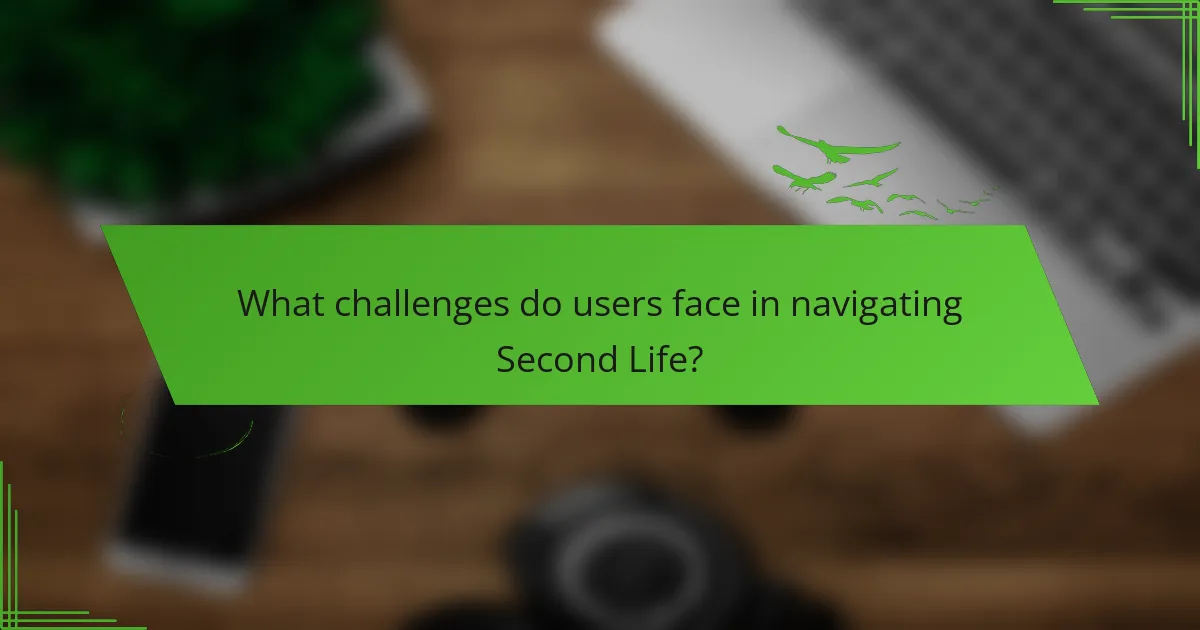
What challenges do users face in navigating Second Life?
Users face several challenges in navigating Second Life, including complex interface design, social interaction difficulties, and performance issues. The intricate user interface can overwhelm new users, making it hard to find essential features. Additionally, social dynamics may create barriers to forming connections, as users must navigate various communication styles and cultural norms. Performance issues, such as lag and crashes, can hinder the overall experience, leading to frustration. These challenges can impact user engagement and creative expression within the virtual community.
What are common technical issues encountered by users?
Users commonly encounter technical issues in Second Life, including connectivity problems, graphics rendering errors, and account access difficulties. These challenges can disrupt user experience and hinder interaction within the virtual community.
Connectivity problems often arise from network instability or server issues, leading to lag or disconnections. Graphics rendering errors may occur due to outdated hardware or software incompatibilities, impacting visual quality and immersion. Account access difficulties can stem from forgotten passwords or account verification issues, preventing users from engaging with the platform.
Addressing these technical issues is crucial for maintaining a seamless user experience in Second Life. Regular updates and user support can help mitigate these challenges and enhance overall satisfaction.
How does user behavior impact community health?
User behavior significantly influences community health by shaping interactions and fostering creative expression. Engaged users contribute positively, enhancing social connections and support networks. For example, active participation in virtual communities like Second Life can lead to improved mental well-being and reduced feelings of isolation. Additionally, user-generated content often reflects diverse perspectives, promoting inclusivity and understanding within the community. As a result, the overall health of the community benefits from vibrant user dynamics and collaborative creativity.
What measures can be taken to ensure a safe environment?
To ensure a safe environment in Second Life, users should follow specific measures. Implementing strict community guidelines fosters respectful interactions. Regular moderation helps identify and address harmful behaviors promptly. Users should utilize privacy settings to control personal information exposure. Encouraging reporting of inappropriate conduct enhances community safety. Lastly, educating users about potential risks and safe practices promotes a secure virtual space.

How does Second Life differ across cultural contexts?
Second Life varies across cultural contexts due to differing values, norms, and user interactions. In collectivist cultures, community-focused activities dominate, while individualistic cultures emphasize personal expression. User-generated content reflects these cultural differences, influencing the aesthetics and social dynamics within the virtual space. For instance, users from Eastern cultures may prioritize collaboration, whereas Western users often seek competition and self-promotion. As a result, the overall experience in Second Life is shaped by these cultural influences, creating a diverse virtual landscape.
What regional trends influence user behavior in Second Life?
Regional trends significantly influence user behavior in Second Life. Users from different regions exhibit distinct preferences in virtual interactions, creativity, and community engagement.
Cultural backgrounds shape how users communicate and collaborate within the platform. For example, users in collectivist cultures often prioritize group activities, while individualistic cultures may focus on personal achievements.
Economic factors also play a role. Users from regions with higher disposable income tend to invest more in virtual goods and experiences. This spending behavior influences the overall economy within Second Life, affecting availability and pricing of virtual items.
Additionally, technological access varies by region, impacting user engagement levels. Areas with high-speed internet and advanced devices foster more immersive experiences, enhancing user interaction and creativity.
Which cultural events are celebrated within the platform?
Second Life celebrates various cultural events, including virtual festivals, art exhibitions, and community gatherings. These events foster user interaction and creative expression, enhancing the platform’s vibrant community. Notable celebrations include Halloween, New Year’s, and themed events that reflect real-world cultures. Participants engage through performances, contests, and collaborative projects, showcasing diverse artistic talents.
How do local communities shape the virtual landscape?
Local communities significantly shape the virtual landscape by fostering collaboration, creativity, and social interaction. In platforms like Second Life, users create diverse environments that reflect their cultural backgrounds and interests. This collaborative effort leads to unique virtual spaces that encourage user-generated content and communal experiences. Local communities also influence the dynamics of user interaction, promoting engagement through events, forums, and shared projects. As a result, these communities enhance the overall richness and diversity of the virtual landscape.

What are the unique attributes that set Second Life apart from other virtual platforms?
Second Life distinguishes itself through its extensive user-generated content, immersive social interactions, and unique virtual economy. The platform allows users to create and customize avatars, build environments, and engage in diverse activities, fostering a vibrant community. Additionally, the freedom of creative expression empowers users to develop unique experiences, setting Second Life apart from other virtual platforms. Its rare attribute includes a fully functioning virtual marketplace where users can trade virtual goods and services, enhancing the overall user experience.
How does Second Life facilitate a sense of presence among users?
Second Life fosters a sense of presence among users through immersive environments, real-time interactions, and customizable avatars. These elements create a shared experience, enhancing emotional connections. Users navigate diverse virtual spaces, engage in social activities, and express creativity, contributing to a vibrant community. The platform’s design encourages exploration and collaboration, deepening user engagement and presence.
What unique user experiences can only be found in Second Life?
Second Life offers unique user experiences through immersive social interactions, customizable avatars, and user-generated content. Users can create and explore diverse virtual environments, attend events, and participate in economic activities like buying and selling virtual goods. The platform fosters a sense of community, enabling collaboration and creative expression. Users can also engage in role-playing, art exhibitions, and educational experiences, which are distinct to this virtual world.
Which rare events or features create memorable moments for users?
Unique events in Second Life, like community-driven art installations or live performances, create memorable moments for users. These features foster deep interaction and creativity, enhancing user engagement. Rare collaborative projects, such as virtual festivals, also leave lasting impressions. Users cherish these unique experiences, contributing to a vibrant community culture.
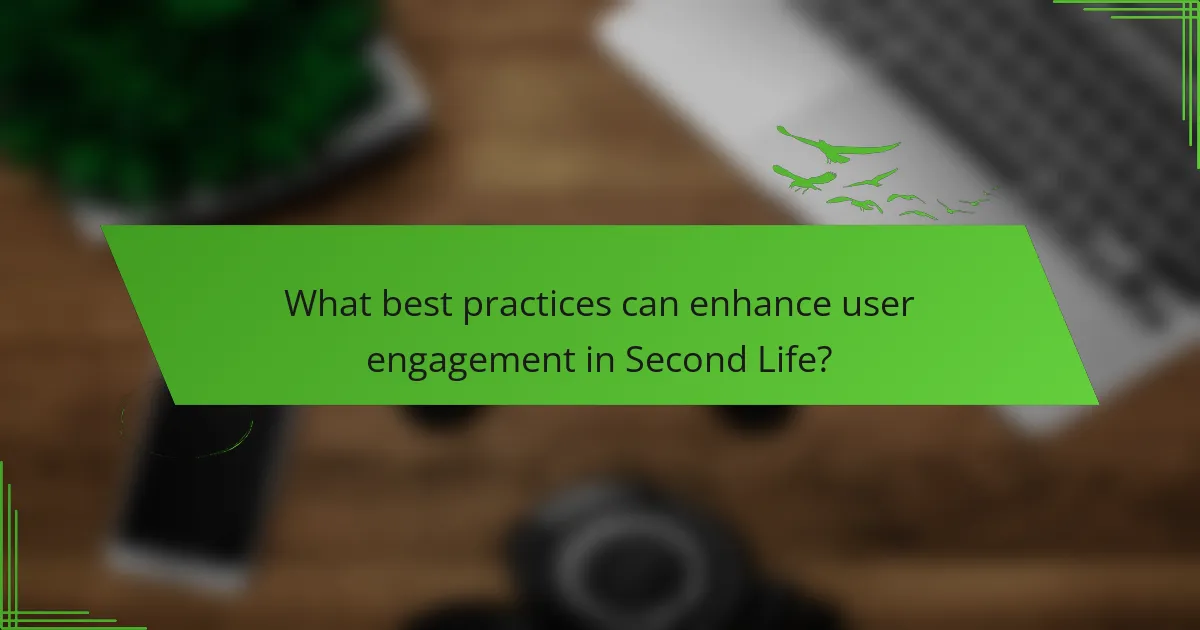
What best practices can enhance user engagement in Second Life?
To enhance user engagement in Second Life, focus on fostering community connections, offering interactive content, and facilitating user-generated experiences.
Encourage social interactions through events, workshops, and collaborative projects. Provide tools for users to create and share their content, enhancing the platform’s creative expression. Regularly update features based on user feedback to maintain relevance and excitement.
Incorporate gamification elements, such as rewards for participation, to motivate users. Create inclusive environments that cater to diverse interests and backgrounds, promoting a sense of belonging.
How can users effectively network and build relationships?
Users can effectively network and build relationships in Second Life by engaging actively within the community. Participate in events, join interest-based groups, and utilize social media tools for connection.
Building authentic relationships requires consistent interaction and collaboration on creative projects. Attend virtual meetups and workshops to meet like-minded individuals.
Leverage Second Life’s unique environments to showcase talents and foster connections. Engage in discussions and provide support to others, enhancing your network organically.
Finally, follow up with contacts after initial interactions to strengthen bonds. Regular communication can lead to lasting relationships that enrich your virtual experience.
What strategies should users adopt for successful content creation?
To successfully create content in Second Life, users should focus on community engagement, consistency, and creativity. Engaging with other users fosters interaction and collaboration, enhancing the creative process. Consistent content updates keep the audience interested and involved. Creativity drives unique expressions, making content stand out in the virtual community.
Which common mistakes should users avoid in Second Life?
Users should avoid common mistakes in Second Life to enhance their experience. Key errors include neglecting to explore user-generated content, ignoring community guidelines, and failing to customize their avatars.
Forgetting to engage with others limits social interaction and reduces enjoyment. Overlooking the importance of virtual property management can lead to financial losses within the game. Lastly, not taking advantage of the learning resources available can hinder creative expression and skill development.
